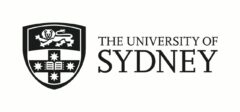[Updated 2 July 2015. An abridged earlier version of this posting can be found at http://www.eastasiaforum.org/2015/07/01/compromised-investor-state-arbitration-in-china-australia-fta-2/. It forms the basis of my Submission presented to parliamentary inquiries into the FTA by JSCOT and a Senate Committee.]
Australia signed its bilateral free trade agreement with China on 17 June 2015, after announcing last November that negotiations had been concluded – including investor-state dispute settlement (ISDS) provisions. These provide another way for foreign investors to claim against host states that violate substantive commitments, if the investor’s home state doesn’t use the inter-state arbitration protections also given in the treaty, for political or diplomatic reasons. ISDS is especially useful when the host state’s laws and procedures do not meet commonly-accepted minimum international standards.
ISDS variants are included in most of the treaties concluded by Australia as well as many by China. In fact, as it emerges as a major capital exporter, China’s recent treaties have expanded the scope of protection reinforced through ISDS provisions. Australia has instead become more cautious, like other countries after being subjected to an initial ISDS claim – Philip Morris Asia’s claim in 2011 regarding Australia’s tobacco plain packaging law, still pending along with WTO claims. Indeed, the Gillard Government Trade Policy Statement (2011-13) went as far as eschewing ISDS in any future treaties. Since September 2014, however, the Abbott Government has reverted to including ISDS on a case-by-case assessment. It was incorporated into the (long-stalled) FTA signed with Korea last year, but not the FTA with Japan. Relevant factors seem to be whether the counter-party presses strongly for ISDS and offers enough in return during negotatiations, and whether Australia may have concerns about investor protections available through the counter-party’s local courts.
Australia’ reversion to pre-2011 treaty practice has not stilled public debate. It has escalated, particularly given negotiations for an expanded Trans-Pacific Partnership agreement (including also Japan and the US, but not China). A Greens Senator introduced an “Anti-ISDS Bill” last year to prevent ISDS being included in future agreements, but even Labor Senators on the Committee agreed that this encroached too far on the executive branch’s constitutional responsibility to negotiate treaties. Labor parliamentarians initially opposed ratification of the Korea FTA, raising ISDS concerns, before agreeing in October 2014 to vote for legislation implementing tariff reductions, even in the Senate where the Abbott Government lacks an absolute majority. This year the Greens and others highlighted ISDS again in a broader Senate inquiry into the role of the legislature and public consultation in Australia’s treaty-making process. Parliament will now inquire into the China FTA, including of course ISDS, and there is a (small) chance that Labor Senators will vote against tariff implementation legislation to prevent ratification and the treaty coming into force.
Against this backdrop, Australia’s major newspapers reflect and encourage polarized views over ISDS. The Sydney Morning Herald (like The Age in Melbourne) is consistently opposed, as explained below.
Continue reading “Compromised ISDS-backed investment commitments in the China-Australia FTA”
